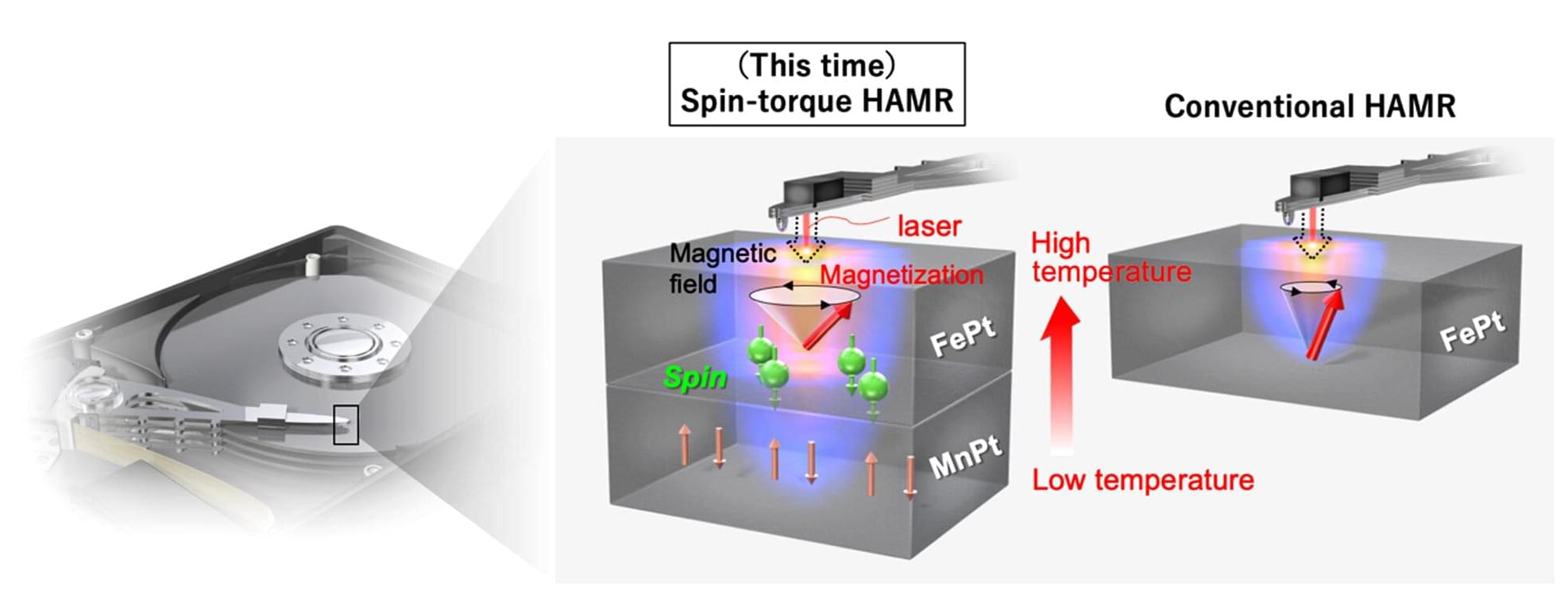In conventional heat-assisted magnetic recording (HAMR), a laser is used to locally heat the recording medium to facilitate data writing. However, the thermal energy applied is largely dissipated within the medium and does not contribute directly to the recording efficiency. Moreover, this high-temperature process consumes substantial energy and raises concerns regarding the magnetic and physical degradation of the medium, especially under repeated use.
The research team focused on the temperature gradient generated within the recording medium during laser irradiation. They developed a novel structure by inserting an antiferromagnetic manganese-platinum (MnPt) layer beneath the iron-platinum (FePt) recording layer. This structure achieved approximately 35% improvement in recording efficiency compared to conventional HAMR.
This enhancement stems from spin currents generated by the temperature gradient, which induce spin torque that assists magnetic switching—effectively augmenting the conventional thermal assist effect. Furthermore, the study demonstrated that spin torque can be applied to hard disk drives (HDDs), paving the way for a new class of recording technologies.
